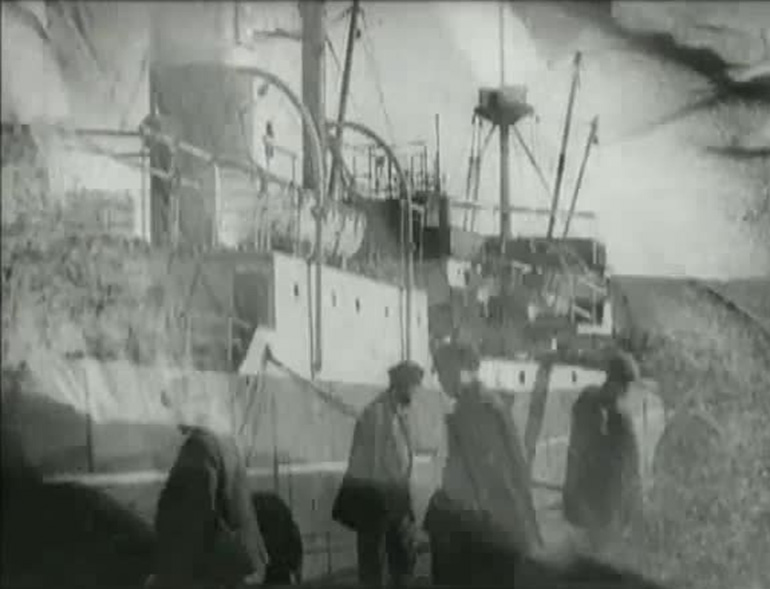THE NECESSARY AMATEUR. CINEMA, EDUCATION AND POLITICS. INTERVIEW WITH CEZAR MIGLIORIN
Albert Elduque
 FORWARD
FORWARD
 DOWNLOAD
DOWNLOAD
 ABSTRACT / KEYWORDS / INTERVIEW / FOOTNOTES / BIBLIOGRAPHY / ABOUT THE AUTHOR
ABSTRACT / KEYWORDS / INTERVIEW / FOOTNOTES / BIBLIOGRAPHY / ABOUT THE AUTHOR
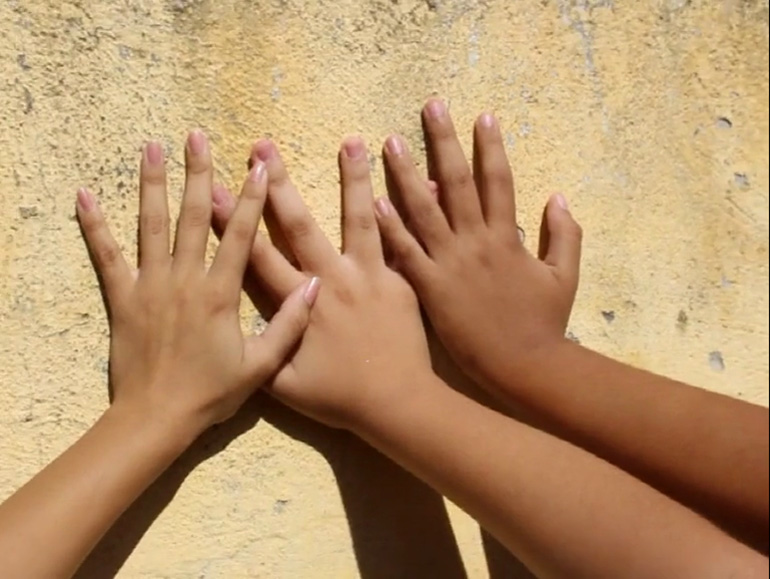
A recurring topic in New Latin American Cinema manifestos is its commitment to break with the traditional spectator and to build a cinema of collective creation. Julio García Espinosa firmly believed that the universalization of university education, social and economic development, together with technological evolution would allow everyone to make cinema, which as an activity would escape from the closed professional spheres. And he pointed out that spectators should become, ‘rather than more active spectators or coauthors, real authors. We should ask ourselves if art is really an activity for specialists. If art, by extra-human plans, is a possibility for a few, or a possibility for everyone’ (1969: 16-17). Jorge Sanjinés referred to similar ideas when he acknowledged that ‘as in popular ceramics there is a collective spirit and signature and not just the style of one individual, in this cinema too, when it is fully developed, there will be the breath of a nation and its deep truth’ (1979: 80). Meanwhile, Fernando E. Solanas and Octavio Getino (1969) saw ‘cinema act’ projections as a community space where the passive spectator was abandoned by turning him into an agent of the discussion and, therefore, an actor of the cinematographic experience, lived in a community. In their opinion, Third Cinema had to be handmade rather than industrial; it should be for the masses rather than for individuals, made by operative groups rather than by authors. And this posture materialized in the form of guerrilla film, cinema act and in the many categories included: letter film, poem film, essay film, pamphlet film, report film, etc.
Over the years, this spirit has not been mitigated, and it has also brought many initiatives into existence. In Latin America there have been, over the years, many projects carried out to make cinema with marginalized communities, either in the poor outlying areas of big cities or in indigenous groups, as well as many cinema projects in schools. In these initiatives, a necessarily political cinema is produced, a cinema that supports not only the portrayal of certain social problems or political criticism, but also ways of creating which, based on the aforementioned access to technology, break with the rationale of professional training and foster creative and collaborative pedagogies. Cezar Migliorin, a lecturer at the Universidade Federal Fluminense (Niterói, Rio de Janeiro), is the coordinator of Kumã: Laboratório de pesquisa e experimentação em imagem e som (Kumã: Laboratory for research and experimentation with image and sound), which is responsible for one of these initiatives: Inventar com a Diferença (Invent with Difference), a project to teach cinema in Brazilian schools which came into being in 2013. He is one of its pedagogical coordinators, along with Isaac Pipano, and has recently published the book Inevitavelmente cinema: educação, política e mafuá (2015), based on this experience, as well as many essays about cinema, politics and social movements. We talked with him about the project and the possibilities of political cinema using these apparently peripheral initiatives in order to consider those creative ideas from the manifestos of the ‘60s.
How did the project Inventar com a Diferença appear?
In my doctoral thesis, submitted in 2008, I studied Brazil’s recent documentary cinema, and one of its essential concepts was the notion of the dispositif: the dispositif as a trigger of chance, a way of losing control a little. The title of the thesis, Eu sou aquele que está de saída (I am the one leaving), was an attempt to reflect this: a director who is present but at the same time always leaving, always abandoning the work, finding ways to be absent. Hence, the dispositif as a booster of chance. And, at the same time, the dispositif made it possible to connect heterogeneous forces, subjects, technologies, etc. that would otherwise never have come into contact with each other. Once my thesis was finished, I joined the Universidade Federal Fluminense, where we started a project linked to the Escola Livre de Cinema de Nova Iguaçu, a town near Rio where I had worked previously. In 2011, a ‘licenciatura’1 in cinema was introduced at UFF, the first and the only one in Brazil: a degree designed to train teachers for schools, cultural centers, museums, etc. That is why the Secretary for Human Rights of the federal government called us one day to draw up a national project linked with cinema, education and human rights. And at that moment, while we were shaping a methodology for teaching cinema to children and teenagers in formal education, the notion of the dispositif reappeared: we discovered that the history of cinema and cinematographic practice could be approached as a game, as a fun way of producing images, rather than teaching cinematographic language in a traditional way. Thus, a formal element which in the thesis was linked with political documentary evolved towards education. Inventar com a Diferença emerged from there, and it could be defined as a project on cinema and education guided by an artistic and political dimension.
How has the project developed over the years?
Inventar com a Diferença was launched in 2013, and we started working in schools in 2014. We understand that what we created at the UFF is a technology for cinema in school, which includes methodology and processes of tracking, evaluation, communication, etc. We train teachers in cinema with this technology, and they pass it on to people of any age: we know that it has been used with four-year-old children, and also with old people who were learning to write! In 2015 the funding disappeared, but it was a very special year: a town in Ceará, in the north-east of the country, asked us for this technology to use it in all their schools, a total of 32! It’s the first and only time we have applied it in all the schools in a town. In 2016 we received new funding to work throughout the whole country, and today Inventar com a Diferença is a big project: we work nationally, with 13 universities, more than 200 schools, and with more than 20 states involved. It’s amazing. And over the years we have been getting very strong feedback, from the films produced by the students to the mobilization that cinema generates within a school: either by watching films, making them, being in contact with the community or with the powers involved in the school, etc.
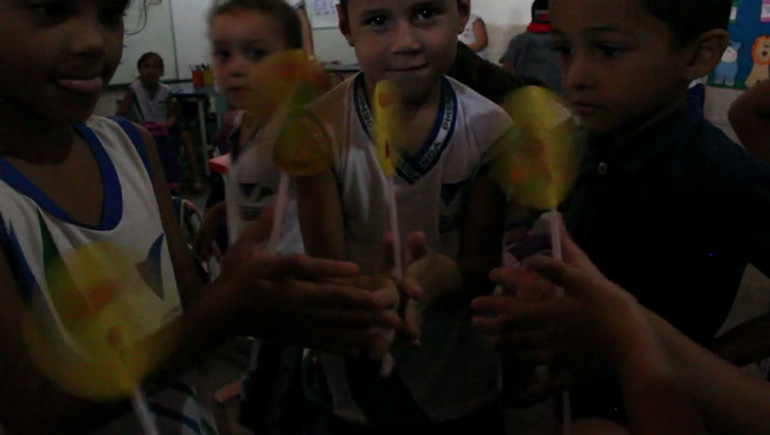
Let’s talk now about your pedagogical methodologies. How is this work carried out with the dispositifs? What filmography do you work with as a reference?
We recommend a few shorts, we send a DVD with examples that work with the dispositif... It’s not classic or historical filmography, but rather an approach to the creative and ethical aspects of the image. The most important thing is the experience with the image based on the rationale of the dispositif, which would be linked, in any case, to the documentary and to an experimental, essay type of cinema. The project is not based on the script or cinematographic language, but on the image itself, by carrying out a series of exercises. One of these, for example, is the ‘discussed shot’, an idea used by Alain Bergala in France: you take a shot and you watch it, over and over again, in slow motion, forwards, backwards... and two people discuss it. This is a dispositif. Another example is the Lumière minute, another the haiku film, which helps students to start working on editing: a shot for every sentence of the haiku. Each exercise has a card containing a short theoretical reference, the goals and the necessary resources.
How is the production of these films organized? Is it completely collective?
There is never a director or any separation of tasks. That is how most dispositifs work; they can be carried out by one, two, five people... I have been at many schools and the experience is always that during the practice sessions the group organizes itself: one of the members is close to the camera, another one will be managing the passers-by, another will be simply messing around, etc. We were never interested in training filmmakers. Above all, we want to facilitate an approach to things through image, by perceiving the sensitive potential that cinema has in this relationship with the world, with other people, etc.
Do you think cinema is a privileged place to work with this idea of collectiveness, comparing it to other arts or other school subjects?
There is an initial moment of collectiveness, which is the viewing: watching a film together. And one very important detail: the teacher sits together with the students. The teacher has to take part in this collectiveness, because he doesn’t know cinema very well, he too is discovering it... Sometimes students know cameras better than he does. And this is already transforming the notions of hierarchy. On the other hand, you know that the practice of cinema can be extremely hierarchical. But in the case of dispositifs, it is better to follow certain rules, step by step, and the way students try to follow them is very collective. It isn’t about organizing beforehand what each person has to do, but rather about thinking together: ‘Now we are going to place the camera in a certain spot to shoot for a minute. How are we going to do this?’
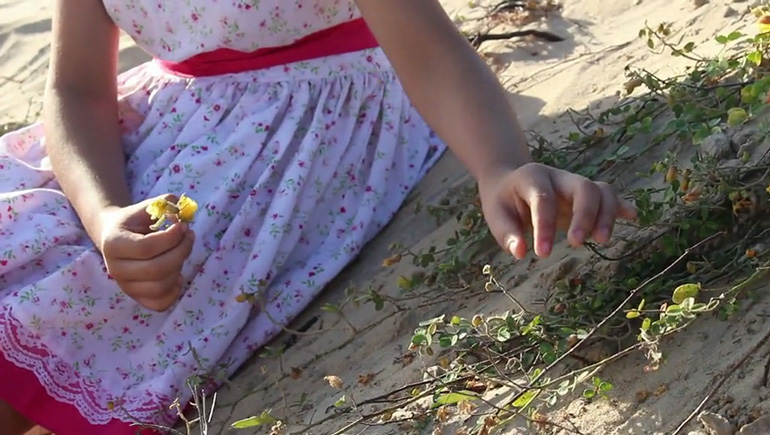
How do students create the stories for their films? Are they based on their everyday experiences?
We don’t deal with narrative problems from the beginning. The initial problems are not a story or a representation, but formal issues, image analyses and framing. And the first exercises are also formal: shooting a one-minute fixed shot without sound, or making a film based on a poem, something like that. Over time, the narrative aspect appears, but as a demand from the students: ‘I’ve made a shot, I’ve edited three shots together, now I want to tell a story!’ That is why we have more narrative dynamics, which is the letter film: making a film using the format of a letter. The first year, for example, schools exchanged letter films. In general, we wanted to stay away from the cinema workshops in schools that are based on scripts, because in these experiences, those students who perform well in class, who write well, who get good grades in Language and History, continue to be the leaders in the cinema class, because it’s all about writing. That is why we wanted to base it on image, in order to break the previous hierarchy in class. And also to do projects that weren’t frustrating for the students: if a twelve-year-old kid follows the conventional patterns and wants to make a comedy or a horror film, he will face many problems, because it’s very difficult to make someone laugh or feel scared! However, in essay and letter film, the frustration is lower; it allows students to focus on the community, and to discover things that are only possible in cinema, using editing, sound, etc.
A project initiated in Barcelona, Cinema en Curs, works similarly, and their films prove that this project, which is intimate and close to the images, has provided students with a tool to find out more about the world they live in, their neighborhood, etc. Do you think the same happens with your projects?
I think so. One of the reasons we didn’t start with topics is because we strongly believe in this: that what we had to do was to give the students the means to think aesthetically about images, to sense that they have a powerful tool to connect with other people, with the world. From this standpoint, once the student takes a camera and has to shoot a one-minute-long shot, he asks himself: ‘What am I going to do the shot about?’ And he shoots a sewer. And it is discussed. And later on he wants to make a film about the sewer! The idea behind the images results in a very unique mobilization of each student and each town. In many places, using letter films, they discussed topics related to the environment, class differences, popular culture, etc. And we didn’t guide them in this direction, we didn’t tell them ‘Okay, now we’re going to talk about the environment’. We never did that. We also took the project to three schools inside penitentiaries for teenagers, called socio-educational centers. The films made in these places are impressive: they are young, they’re teenagers, and through cinema they think about their lives, about the outside world, and they invent ways of expressing and reflecting things that would rarely appear without this tool.
Is it, then, a political cinema?
Without a doubt. If there is a strong dimension in today’s political cinema in the country, it is the one found in places where you wouldn’t expect cinema to be: in schools, in indigenous communities, in quilombola communities, etc. These are places where cinema is strongly linked to routine and to life, where cinema is not yet professional: it is a necessary amateur cinema. In the case of indigenous peoples, this is very strong, because cinema is extremely important for recording personalities, traditions, how the community is understood, and so on. We could almost talk of micropolitics, which include the fact that this cinema exists in these indigenous communities or in schools. It also includes the right of these students in public education to have access to certain images: in Brazil, if you don’t watch Kiarostami in school, you will probably never see it anywhere else... it’s almost impossible. And we work in many cities in the inland areas, in the poor, peripheral districts... in places where the teachers, who are the guides, have never been to the cinema! At the same time, these processes are macropolitical operators, because a film made in an indigenous community will be used to dialogue with the Secretary of Culture, as proof that certain communities deserve acknowledgment. I think that in schools, this macro aspect is less intense, but it is present, too.
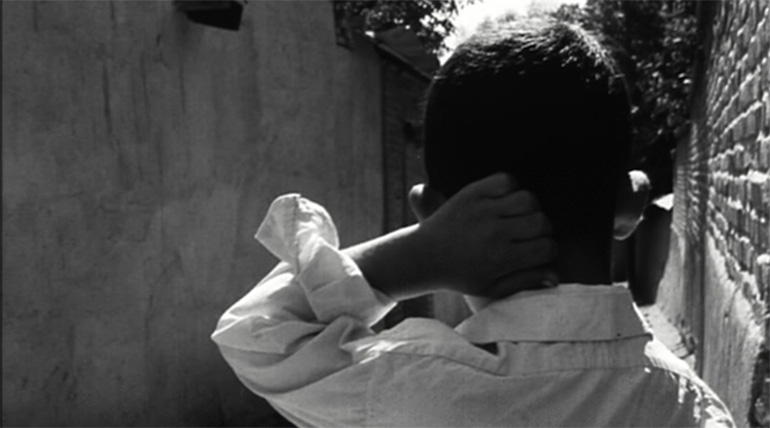
Politics, then, is in both the process of production and in the result that discusses social issues.
Without a doubt. And this brings us to think about how we deal with these films. I recently wrote an article with Isaac Pipano, another of the creators of the project, in which we wondered how we, the critics and members of the university, approach films made in school. On the one hand, we need to include the process: how does it work collectively? What is its effect on the school project? How does a teenager see the images that he or his classmates have shot? This is all part of a process. At the same time, when I watch these films, I have to approach them as films, I have to analyze their editing, their shot options, etc. Because if I give up on the film as an object of art, then I lose cinema too. The challenge is to see how these two dimensions talk, dialogue, etc.
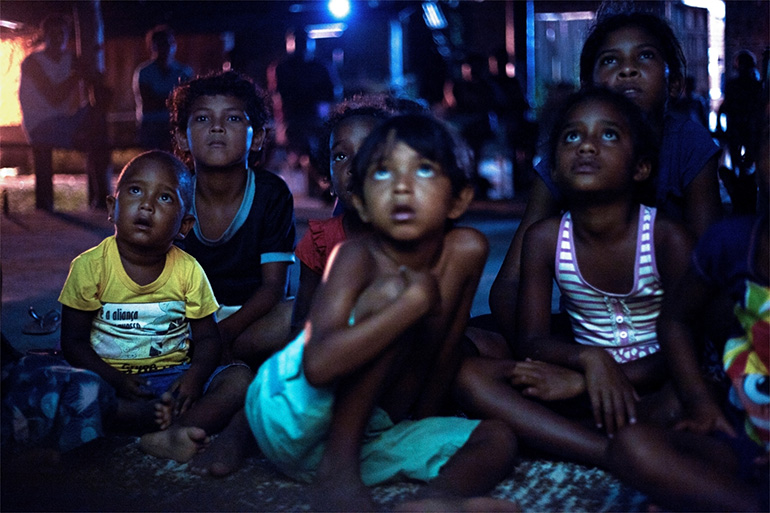
Do you think university will face this challenge? Because there is a huge production in both school cinema and in indigenous cinema. Vídeo nas Aldeias2, to give just one example, has produced more than 70 films. And sometimes it is difficult to access all this material. Do you think that the images of school cinema or native cinema will someday be considered as the films that, after all, they are?
Nowadays, there is a lot being written in university about indigenous cinema. There is a huge academic production, not only about the training and creative process, but also directly about images. At the Universidade Federal de Minas Gerais there are some important researchers – such as André Brasil, César Guimarães and Ruben Caixeta – who are completely dedicated to this cinematography. There is still a small amount of production of cinema in schools that deals with films directly. But it seems to me that in Brazil, the discussion about the expansion of cinema towards these territories (schools, indigenous groups, etc.) is very advanced, very developed. I have lived in England for a year and I haven’t seen anything similar.
I think that in the whole of Latin America there is a large amount of projects that teach cinema in the communities, a lot more than in Europe.
I don’t know Europe very well, but it is undoubtedly very strong here. For example, in Brazil we have a strong tradition of community television: in Rio in the ‘80s, there was a channel created by the Philippe Pinel Institute, which is a center for the mentally ill. However, I think that, compared to other experiences, recent cinema in schools has intensified the aesthetic dimension as a principle, instead of being based on social issues. Traditionally, the central idea was that cinema should be brought to these resourceless people so that they could talk through images. This means that the political aspect of this cinema is directly linked to a representational aspect: the people in the poor outlying districts have to speak about themselves because the mass media won’t, and therefore there is a misrepresentation. In Inventar com a Diferença, and in many other projects, there are problems of representation, but they aren’t the ones that mobilize people in the first place. What mobilizes people is the belief that a sensitive experience exists – of the world, of oneself – that is independent of social class and which is possible through cinema. This is necessary in the slums, but also in other places.
The Cinema Novo of the ‘60s considered the representation of the working-class as one of the central concepts of its political and cinematographic project. Could we say that you take this a step further and reach where the movement never did?
I think they are different things. In Cinema Novo, one main idea is the fact that it is possible, through cinema, to imagine a country, a nation: that cinema can become one of the elements in the process of creating what means to be Brazilian. That is one of the most beautiful things about Cinema Novo: ‘I will understand my city with this camera, I will create the country in relation to history using an actor, editing, etc.’ Cinema Novo doesn’t invent the posture, but it does invent formulas to connect with this desire for invention. On the other hand, maybe our approach to cinema in schools is that making images is a way of discovering the world: we believe that images provide teenagers and teachers with a tool that intensifies relationships, the way we think about ourselves, and thus they discover something new, something that wasn’t there before. Maybe this is the continuity, a belief that cinema is a way of inventing, of relating to what one is looking for, rather than its representation. The problem is not representing what is already there, but of conceiving cinema as a reflexive, sensitive... operator of ways of inventing.
Do you think that the work in schools and communities can change the way we approach cinema, and even change the systems of distribution and consumption?
I think so. For example, we now have a law in Brazil that obliges schools to show two hours of Brazilian cinema every month. This is partially resulting from this process, from this constant reflection about cinema that is introduced to schools not only as content, but also as cinema itself. At the same time, it seems to me that in these processes, a pedagogy exists about the importance of images. When people find out that we work with cinema in schools, they say: ‘Ah, but that is very easy, kids are shooting all the time!’ Yes, it’s true, but kids don’t make cinema, they don’t make shots. They shoot and shoot, but they don’t stop and think: ‘Now I’m turning on the camera’, ‘Now I’m turning off the camera’, ‘Now I’m going to think about the off-screen’. Discovering the off-screen, think about that! A kid starting to think about the off-screen gains a radical ethical dimension; it’s like he is opening up to a lot of inventive possibilities that go beyond cinema, and which reach into fields such as writing.
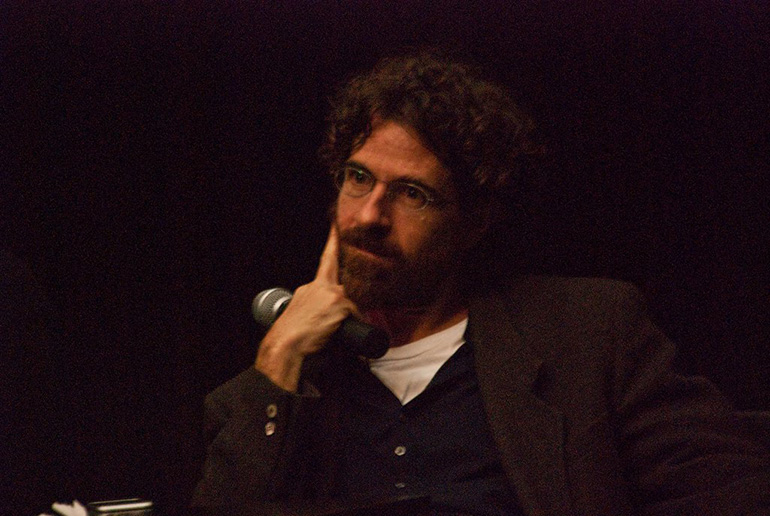
Anyway, technological facilities are essential. They are present in discussions about political cinema from Vertov to the present day, including some New Latin American Cinema manifestos which supported collective creation, separate from the big production centers. Nowadays, smartphones and social networks, for example, offer a wide scope to political cinema.
I agree. If I may, I would like to talk about a personal experience: I have just made a film called Educação which I directed together with Isaac Pipano. Since we work in education, we started following the occupations of schools that have recently taken place in Brazil, by browsing the Internet to find images of these occupations shot with phones, inside the schools, outside the schools, etc. And we came upon a very impressive one: a justice officer, a representative of Brazilian justice, goes to the door of a school, with policemen, holding a judge’s order that says that the school has to be evacuated. Her discourse is absolutely conservative and disciplinary. The video is 15 or 20 minutes long, and she tells the students they have to leave and threatens them by saying that if they don’t leave, she will send in the police. In between there are people standing up for the students who are trying to get a document that will allow them to stay. We realized that these school occupations were reactions to a process of dismantling Brazil’s public education, so we started searching for other images on the Internet: images of journalists, of NGOs devoted to education, of the Senate... and we made a film using just montage. We have recently finished it and now we are showing it in different places, including occupied schools.
How has it been received?
Very well. Because we chose to do a montage where we do not explicitly define our position, but in which we connect elements of education that we usually see as dispersed, separate. For example, in Goiás there is a school that has recently begun being managed by the Military Police and is now called Escola da Polícia Militar Fernando Pessoa. And the news talks about it as if it was completely normal! If you see it on television, you wouldn’t pay any attention to it, but if you place it next to politicians’ speeches, or the materials for teachers produced by the NGO founded by Jorge Paulo Lemann (the richest man in the country), then you realize that the NGO, the Senate, journalism – they all completely undervalue education! It’s an attack. And at the same time, students, with their eloquence, are occupying the schools. The montage places these elements together. I am thinking now of A Sixth Part of the World (Shestaya chast mira, 1926) by Vertov, a fantastic film. It’s based on the idea that the Soviet Union represents one-sixth of the world, and it is comprised of a very fast montage featuring different elements: machines, workers, etc. Jaques Rancière says that it creates a spiral montage; that it joins and joins images – even Africa appears in it! According to Rancière, Vertov’s communism is a spiral that will end up occupying the whole planet. I remember this film because there are a lot of people working on this aspect now, which means going back to the problem of montage: with the huge amount of images available nowadays, how do we edit, how do we organize?
These types of works seem the perfect complement to the sensitive discovery of Inventar com a Diferença. In one case, reality is explored to achieve new images; in the other, a lot of images are articulated once again.
It’s true, there are many contemporary examples. Vincent Carelli, founder of Vídeo nas Aldeias, does it in his latest film, Martírio (2016); I also remember Agustín’s Newspaper (El diario de Agustín, 2008) by the Chilean documentary maker Ignacio Agüero, in which he shows the links between the newspaper El Mercurio and Pinochet’s dictatorship. This is nothing new in cinema, but maybe this emergency in montage is significant. The images are already there, but if they are edited again... The question is: since everyone is busy making their own images, how does this become a film? The experience of the film I just made is incredible, because some of the images were known to everyone, but when you put them in dialogue in a 52-minute-long piece of work, and you ask for the spectator’s attention, they gain intensity, a new and very powerful intensity. It’s the intensity of being together.
FOOTNOTES
1 / In Brazil a ‘licenciatura’ is a university degree aimed at teacher training.
2 / Commenced in 1986 within the NGO Centro de Trabalho Indigenista, Vídeo nas Aldeias is the main project for native audiovisual training and production in Brazil. See www.videonasaldeias.org.br .
ABSTRACT
Interview with Cezar Migliorin, one of the coordinators of the cinema project in Brazilian schools Inventar com a Diferença. We talk about their pedagogical methods, focused on sensitive research with images rather than on the notions of representations, and we discuss the political aspect of cinema made in communities, both in schools and indigenous groups. Working collectively and cinema as a non-professional activity emerge as strong bonds between these works and the manifestos of the New Latin American Cinema. Finally, we deal with the issue of montage, a key element when thinking about political cinema based on the massive production of images taking place today.
KEYWORDS
Cinema and education, dispositif, montage, collective creation, representation, Inventar com a Diferença, Cinema Novo.
BIBLIOGRAPHY
GARCÍA ESPINOSA, Julio (1969). Por un cine imperfecto. In Un largo camino hacia la luz (2000) (pp. 9-30). La Habana: Ediciones Unión.
SANJINÉS, Jorge and Grupo Ukamau (1979). Sobre un cine contra el pueblo y por un cine junto al pueblo. In Teoría y práctica de un cine junto al pueblo. México: Siglo XXI de España Editores.
SOLANAS, Fernando and GETINO, Octavio (1969). Hacia un Tercer Cine. Republished in Cine, cultura y descolonización (1973). Buenos Aires: Siglo XXI.
ALBERT ELDUQUE
Post-doctoral researcher at the University of Reading (United Kingdom), where he is part of the project Towards an Intermedial History of Brazilian Cinema: Exploring Intermediality as a Historiographic Method (IntermIdia). He has studied the relationship between cinema and politics in Europe and Latin America, especially in Brazil, and has published works on filmmakers such as Pier Paolo Pasolini, Marco Ferreri, Werner Herzog, Joaquim Pedro de Andrade and Jorge Silva and Marta Rodríguez. He is currently researching the role of national music traditions in recent Brazilian cinema.
This text results from the project Towards an Intermedial History of Brazilian Cinema: Exploring Intermediality as a Historiographic Method (IntermIdia), carried out by the University of Reading (United Kingdom) and the Universidade Federal de São Carlos (Brazil), and funded by the Arts and Humanities Research Council (AHRC) and the Fundação de Amparo à Pesquisa do Estado de São Paulo (FAPESP).


The Arts and Humanities Research Council (AHRC) funds world-class, independent researchers in a wide range of subjects: ancient history, modern dance, archaeology, digital content, philosophy, English literature, design, the creative and performing arts, and much more. This financial year the AHRC will spend approximately £98m to fund research and postgraduate training in collaboration with a number of partners. The quality and range of research supported by this investment of public funds not only provides social and cultural benefits but also contributes to the economic success of the UK. For further information on the AHRC, please go to: www.ahrc.ac.uk.
The São Paulo Research Foundation (FAPESP) is a public institution with the mission of supporting science and technology research and development in the state of São Paulo. FAPESP selects and supports research projects in all fields of knowledge submitted by researchers associated with institutions of higher education and research in the state. Project selection uses peer review methodology, based on reviews issued by Brazilian and foreign researchers not associated with the Foundation. In 2014, FAPESP disbursed £315 million to fund science and technology research projects. For more information, go to: www.fapesp.br/en


